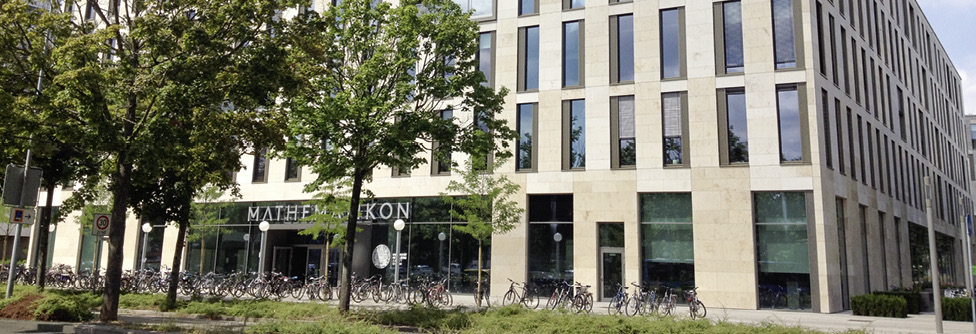
4EU+ School @ IWR "Mathematical and Computational Methods for Challenging Applications"
September 21-25, 2020 • Heidelberg, Germany
[Program][Lecture Blocks][Application][Mobility][Accommodation]
Modern application problems in the sciences rely heavily on data processing and modeling of systems and dynamics. The development of new and improved methods in mathematics and computer science aim to provide the tools and the theoretical background for these methods.
This 4EU+ summer school gives insights into several areas were current research heavily influences method development. Participants will get short, precise and high-powered introductions into several research fields. The aim is to provide the first step for young researchers to extend their toolbox of methods and learn some new, powerful and rewarding technique.
The school aims at master and PhD students from the fields of mathematics and computer science as well as students with an interdisciplinary background in computational science applications. Each lecture block will take the participants from the general education level into a small specialization topic to get a first insight into a new subtopic that will help them to extend their knowledge on theory and methods.
The 4EU+ alliance aims to take education to a next, a European level. With its four flagships, the alliance tackles large questions in research that have fundamental impact on our societies and the way we live, learn and develop. Flagship 3, “Transforming science and society: Advancing information, computation and communication” is coordinated by Heidelberg University. Our summer schools are meant to be platforms to get in touch with 4EU+ and to share our vision of modern education.
The school will be held in Heidelberg (Germany). If the situation in regard to COVID-19 makes this impossible, the school will be shifted to a digital format.
Target Audience
Postgraduate students, PhD candidates, postdocs and young researchers:
- from the fields of mathematics and computer science as well as students with an interdisciplinary background in computational science applications.
- Master students from Heidelberg University
Speakers
The 4EU+ school is taught in a series of courses and single lectures by:
Program
The program is available as PDF:
PROGRAM 4EU+ SCHOOL @ IWR 2020 (PDF)
Last Update: September 17, 2020
Lecture Blocks
The following lecture blocks will be held during the 4EU+ School @ IWR "Mathematical and Computational Methods for Challenging Applications":

Helle Sørensen, University of Copenhagen
"Functional data analysis with applications from life sciences"
Functional data are data that can be represented by suitable functions, such as curves (potentially multidimensional) or surfaces. The statistical questions are of the same type as usual, e.g.: Does the distribution of curves differ between treatment groups? How does a functional covariate affect an outcome variable? Which subjects exhibit similar/different patterns? Functional data analysis enables us to answer such questions regarding comparison of groups, regression, and clustering, as well as many others. The functions are in practice observed at discrete points (densely or sparsely), yet we are interested in them as functions. Basis expansions of the functions play an important role in many methods, either with prespecified or data-dependent basis functions, and it will therefore be the starting point. The talks will furthermore cover topics like mean and quantile regression with functional covariates, classification and local inference, and the methods will be illustrated with applications from the life sciences.
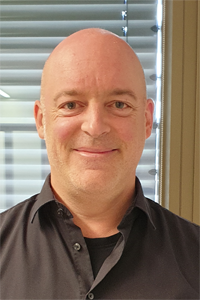
Filip Sadlo, Heidelberg Unversity
"An Introduction to Visual Data Analysis"
Visualization research nowadays comprises three subfields: scientific visualization, which focuses on the analysis of continuous data such as fields in space and time, information visualization, which addresses discrete data such as graphs and multivariate samples, and visual analytics, which addresses the analysis of large data with interactive human-in-the-loop approaches. All three flavors share the goal to extract the "essential structure" of data and transform it for effective visual perception and reasoning. The achieved techniques serve for exploratory analysis and hypothesis formation, confirmatory analysis and hypothesis testing, as well as for presentation within the sciences and into the public. This lecture starts with an introduction to visual data analysis. Subsequently, we visit selected techniques for the analysis of scalar, vector, and tensor fields, accompanied by respective applications from medicine and engineering. The main part of the lecture focuses on the visual analysis of vector fields. Here, we start with time-independent vector fields and examine their feature-based and topological analysis. We then proceed to the time-dependent domain, investigate tracking of features over time and their relation to different frames of reference, followed by topological techniques for analyzing the time-dependent dynamics in vector fields.
The practical part of the lecture focuses on the presented visualization techniques for steady and time-dependent vector fields. Here, we address their practical application including data transformation and visual presentation, and investigate the interrelation of the different concepts and research questions.
The learning goals of this lecture include a basic understanding of visual data analysis, with a focus on vector fields. We aim at establishing intuition on the applicability, interpretation, and limitations of such techniques and their role in research and knowledge acquisition.
CV:
Filip Sadlo received his master’s and Ph.D. degrees in computer science from ETH Zurich. Since 2014, he is a full professor of computer science at Heidelberg University, Germany, and the head of the Visual Computing Group. His research interests include visualization, computer graphics, and computational photography, with a focus on features and flows, physics, and simulation. He served on numerous program committees in the field, and as a co-chair for several conferences.
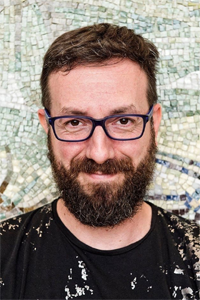
Ivano Eberini, University of Milan
"Computational biochemistry: a link between base and applied research"
Computational biochemistry is mainly based on molecular modelling and informatics tools, combined to try addressing structural, dynamics and functional features of biomolecules, with focus on biopolymers. Its applications include comparative modelling, molecular dynamics simulations, and several other techniques, such as ab initio calculations based on the density functional theory.
Computations and simulations are frequently used to manage biochemical problems not easily addressed by wet experimental approaches, such as deciphering the three-dimensional structure of a biopolymer, inferring its in vivo activity, characterizing at a molecular level its catalytic function or its signal transduction mechanism, or studying the impact of mutations on the structure-function relationship in proteins and eventually their effects on carriers’ phenotypes.
Besides these purposes, mainly focused on basic research, computational biochemistry is becoming one of the most relevant tools of the drug discovery pipeline. It is useful for identifying putative targets, for solving their structure via computational methods, for better understanding their pathophysiological functions, and for identifying and deploying pharmacological strategies, primarily based on the development of novel compounds with specific target-modifying activities. Not only pharmacology, but also toxicology is benefitting from computational biochemistry to clarify the mechanism of action of xenobiotics or to prioritize large datasets of compounds in risk evaluation tasks.
In my talk, I am going to report some typical applications of computational biochemistry: an investigation about the dynamic behaviour of model transporters, an application to pharmacology towards the development of novel GPCR agonists for demyelinating neurodegenerative diseases and an example of toxicological prioritization among environmental xenobiotics involved in endocrine disrupting outcomes.
References: Proteins. 2004 54(4):744 • PLoS One 2014 9(8): e104822 • Front Chem 2018 6:350 • SLAS Discov 2019 24(9):928 • Toxicol Appl Pharmacol 2019 378:114630 • PLoS One 2020 15(4): e0231483
Learning goals:
How to read molecular modeling data, appraising their accuracy level
How to generate and validate a three-dimensional model of a protein by homology modelling
How to use very simple molecular modeling tools to better address in vitro research
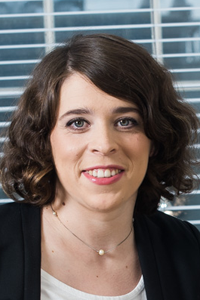
Wanda Niemyska, University of Warsaw
"Knots and lassos in proteins, DNA and RNA - why and how to study?"
The history of science knows dozens of cases when the properties of matter were dictated not by its composition, but rather by its spatial arrangements. In the twentieth century, great attention was paid to monitor the chirality of the compounds. Recently, researchers moved one step further, and focused on the analysis of the influence of the topology on the properties of (bio)polymers. In particular, the effect of knots, slipknots, links and lassos in linear polymers was studied. In the course I would like to show you how you can explore the world of proteins, DNA and RNA using mathematical tools, among others, from the knot theory. We will do it at a basic level, introducing the basics of knot theory (Alexander and Homfly-PT polynomials, Gaussian Linking Number) and showing specific examples of what we can infer about (bio)polymers studying their topology and geometry. We will try to experiment with the new python package, Topoly, to explore some current problems.
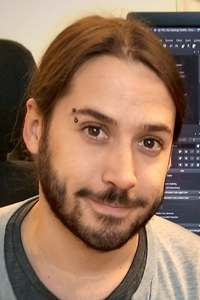
Julien Tierny, Sorbonne University
"An Introduction to Topological Data Analysis"
Topological Data Analysis (TDA) is a recent area of computer science that focuses on discovering intrinsic structures hidden in data. Based on sound mathematical foundations such as Morse theory and Persistent Homology, TDA enables the robust extraction of the main structures present in a data set into stable, concise, and multi-scale descriptors that facilitate data analysis and visualization. In this lecture, I will give an intuitive introduction to the main tools used in TDA (persistence diagrams, Reeb graphs, Morse-Smale complexes, etc) with applications to concrete use cases in computational fluid dynamics, medical imaging, quantum chemistry, and climate modeling. In the second part of the lecture, I will give an introduction to the "Topology ToolKit" (TTK), an open-source library (BSD license) that we develop with collaborators to showcase our research and which implements all of the concepts introduced in the first part of the lecture. In particular, we will illustrate how to use the toolkit to reproduce the most representative examples of the first lecture. Last, we will proceed to a hands-on session for the development of small topological analysis pipelines in Python with TTK. Tutorials for re-producing all the examples shown in these lectures are available on the TTK website.
Application Process
The school is part of the activities of the 4EU+ Flagship 3: "Transforming science and society: Advancing information, computation and communication". The application process is open to all members of the 4EU+ European University Alliance. If you are located at a Non-4EU+ University you can also apply to participate.
General Information
Application of the 4EU+ School @ IWR "Mathematical and Computational Methods for Challenging Applications" is open to postgraduate students, postdocs and young researchers. Please apply with your current CV and a letter of motivation (for MSc/PhD students also signed by the supervisor).
Please note that the number of participants is limited. Confirmation of registration is based on the evaluation of your application.
Application Deadline
Please make sure to submit your application until: July 29, 2020
Application for 4EU+ Partners
If you are located at one of the participating institutions of the 4EU+ European University Alliance - please send your application directly to your local Flagship 3 supervisor via email.
- Charles University • Prof. Jan Kratochvil • honza@kam.mff.cuni.cz
- Heidelberg University • Dr. Michael J. Winckler • michael.winckler@iwr.uni-heidelberg.de
- Sorbonne University • Prof. Gérard Biau • gerard.biau@upmc.fr
- University of Copenhagen • Prof. Morten Misfeldt • misfeldt@ind.ku.dk
- University of Milan • Prof. Vincenzo Piuri • vincenzo.piuri@unimi.it
- University of Warsaw • Prof. Błażej Miasojedow • B.Miasojedow@mimuw.edu.pl
There is a limited number of stipends available for applicants who are located at members of the 4EU+ European University Alliance. The stipends cover the participation costs and provide support to travel and accommodation.
Application for Non-4EU+ Members
If your are located at a Non-4EU+ University please submit your application via the online tool below.
>REGISTRATION FOR NON-4EU+ MEMBERS< Deadline: July 29, 2020
After you have submitted your application via the online tool, you will get a confirmation email from the IWR School Office that we have received your application data.
Participants fee:
- External: 150,- EURO (80,- EURO if the event will be held as a digital format)
- Local: 50,- EURO (20,- EURO if the event will be held as a digital format)
After your participation is confirmed we will send you an invoice for the registration fee 4 weeks before the event starts. The fee covers the attendance to the 4EU+ school, class materials, welcome reception, lunch and coffee breaks on the course days as well as the social program.
Mobility Program
The 4EU+ School @ IWR offers a mobility program to support participants to attend the event. The program covers the participation cost and provides partial support to travel and accommodation. In case you want to apply to the mobility program, please indicate the scope of the required amount and explain this in a separate paragraph of your letter of motivation.
Accommodation
The participants are kindly requested to make hotel reservations individually. Accommodation cost is not covered by the registration fee. Our guest often stay at the following hotels:
- Steffis Hostel (Room allotment available until August 8, 2020. Please use the keyword "4EU+ School 2020" while making your reservation.)
- Auerstein Hotel
- Hemingway's
- Astoria Heidelberg
- Qube Hotel
You can find additional information on available hotels at the official tourism webpage of Heidelberg.
